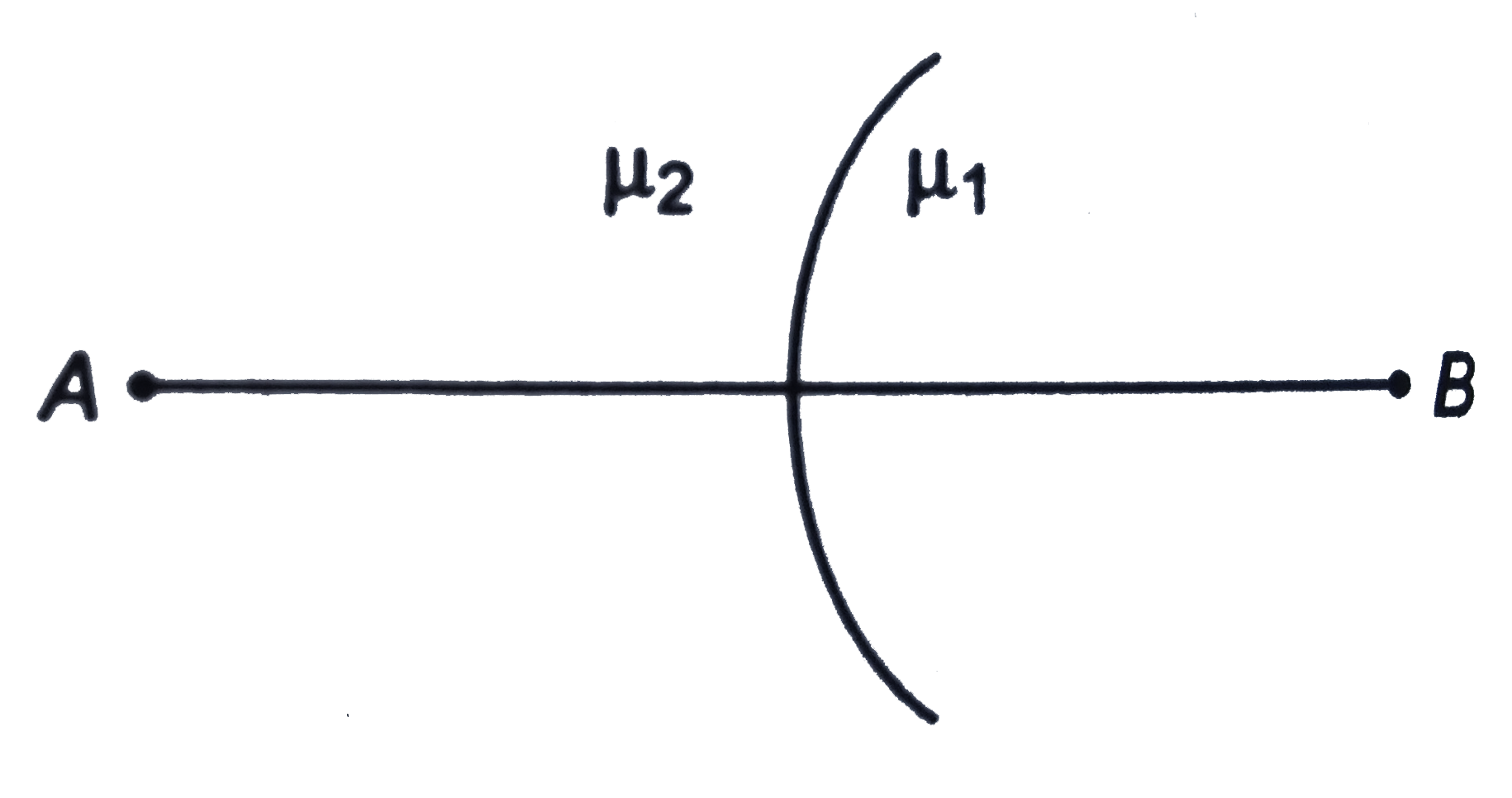Two transparent media of refractive indices are separated by a spherical transparent surface. The rays of light incident on the surface get refracted into the medium on the other side. The laws of refraction are valid at each point of the spherical surface. A lens is a transparent optical medium bounded by two surfaces, at least one of which should be spherical. The focal length of a lens is determined by curvature of its two surfaces and the refractive index (n) of the medium of the lens with respect to the surrounding medium. Depending on , a lens behaves as a diverging or a converging lens. The ability of a lens to diverge or converge a beam of light incident on it defines its power.
A thin converging lens of focal length 10 cm and a thin diverging lens of focal length 20 cm are placed coaxially in contact. The power of the combination is :
Step by step video & image solution for Two transparent media of refractive indices n_(1) and n_(2) are separated by a spherical transparent surface. The rays of light incident on the surface get refracted into the medium on the other side. The laws of refraction are valid at each point of the spherical surface. A lens is a transparent optical medium bounded by two surfaces, at least one of which should be spherical. The focal length of a lens is determined by curvature (R_(1) and R_(2)) of its two surfaces and the refractive index (n) of the medium of the lens with respect to the surrounding medium. Depending on R_(1) and R_(2), a lens behaves as a diverging or a converging lens. The ability of a lens to diverge or converge a beam of light incident on it defines its power. A thin converging lens of focal length 10 cm and a thin diverging lens of focal length 20 cm are placed coaxially in contact. The power of the combination is : by Physics experts to help you in doubts & scoring excellent marks in Class 12 exams.
Updated on:21/07/2023Topper's Solved these Questions
- QUESTION PAPER 2022 SET - 1Book:XII BOARDS PREVIOUS YEARChapter:QUESTION PAPER 2022 SET - 1Exercise:SECTION B
Explore 19 Videos
- EXAM REVISION SERIESBook:XII BOARDS PREVIOUS YEARChapter:EXAM REVISION SERIESExercise:All Questions
Explore 42 Videos
- QUESTION PAPER 2022 SET - 2Book:XII BOARDS PREVIOUS YEARChapter:QUESTION PAPER 2022 SET - 2Exercise:SECTION C
Explore 5 Videos
Similar Questions
Knowledge Check
Two refracting media are separated by a spherical interface as shown in the figure.
 AIf μ2>μ1, then there cannot be real image of real object.BIf μ2>μ1, then there cannot be real image of virtual object.CIf μ1>μ2, then there cannot be a virtual image of virtual object.DIf μ1>μ2, then there cannot be a real image of real object.
AIf μ2>μ1, then there cannot be real image of real object.BIf μ2>μ1, then there cannot be real image of virtual object.CIf μ1>μ2, then there cannot be a virtual image of virtual object.DIf μ1>μ2, then there cannot be a real image of real object.AN unpolarised beam of light is incident at the polarising angle on the surface of a transparent medium of refractive index 1.6. The angle of refraction in the medium is
A58∘B29∘C32∘D42∘Two refracting media are separated by a spherical interfaces as shown in the figure. AB is the principal axis, μ1andμ2 are the refractive indices of medium of incidence and medium of refraction respectively. Then,
 AIf μ2>μ1, then there cannot be a real image of real objectBIf μ2>μ1, then there cannot be a real image of virtual objectCIf μ1>μ2, then there cannot be a real image of virtual objectDIf μ1>μ2, then there cannot be a virtual image of virtual object
AIf μ2>μ1, then there cannot be a real image of real objectBIf μ2>μ1, then there cannot be a real image of virtual objectCIf μ1>μ2, then there cannot be a real image of virtual objectDIf μ1>μ2, then there cannot be a virtual image of virtual object
Define refractive index of a transparent medium ?
View SolutionAt least one surface of a lens is spherical.
View SolutionA ray of light incidents on a refraction surface at 30∘ with the surface.If the angle of refraction is 45∘ refractive index of the medium is qquad √3 √3/2 √32
View SolutionShow that when a ray of light is incident on the surface of a transparent medium at the polarizing angle, the reflected ray and the refracted ray are at right angles to each other.
View SolutionA __________ is a piece of transparent glass bounded by two spherical surfaces.
View Solution
